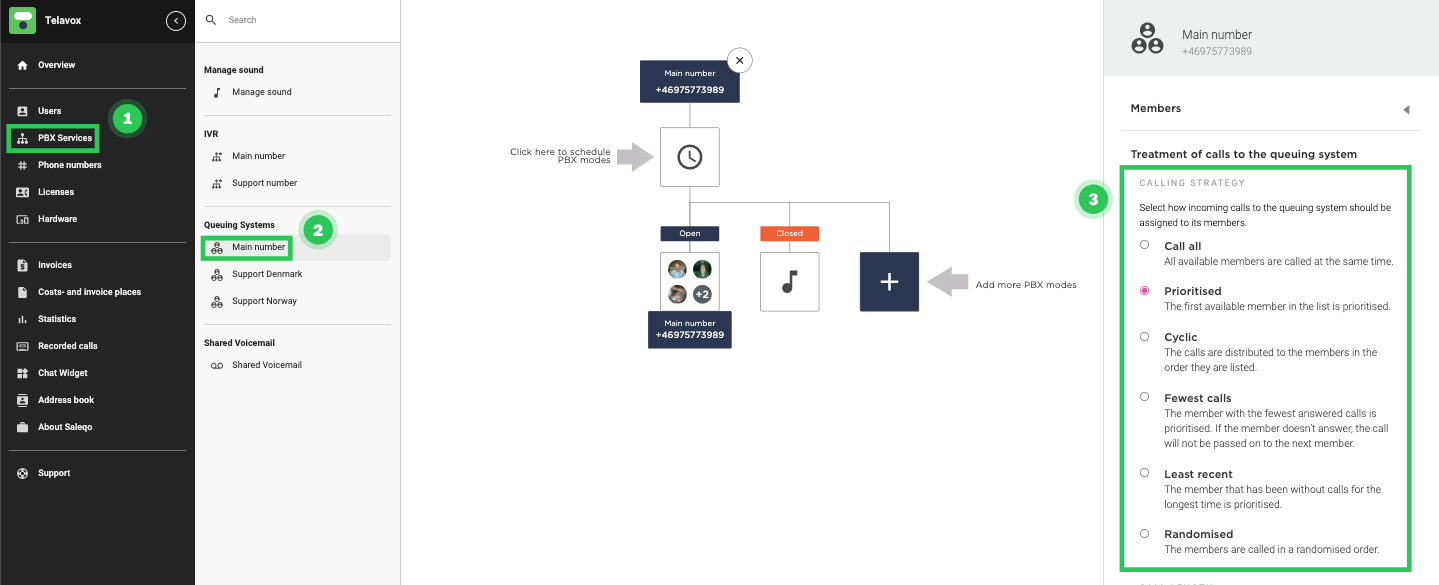When creating a queue, you can select how you want the call distributed among the queue members. You have a couple of different strategies that you can choose from to fit them. The members will be listed in what we call a “hunt group”.
Treatment of calls to the queue
- Call all: This one speaks for itself. All the members of the hunt group are called at the same time.
- Prioritized: The prioritized strategy will always call the first member in the hunt group. If the first person in the group is not free, the call will automatically go to the next person. Next time there is a call, it will start from the top again.
- Cyclic: The first call of the day will always start with the person on top of the group. If the person answers the call, the next one will go to the one that’s next in line. Then it will work like this through all queue members and start from the top again.
- Fewest calls: When you use the fewest calls function, it will always call the person who has answered the fewest calls that day and is free. The call will not be passed on to the next member, but keep on calling the member until it is answered.
- Least recent: The person who has gone the longest without a call will get this call. If the call is not answered, it will go to the person in line who has not been on the phone for the second-longest time.
-
Randomized: If you pick the randomized call strategy, you never know who will get the next call. That way, every member should be ready to take calls.

When you have selected which strategy you want to use for your hunt group, you can also manage the Call length. The call length determines how long every call attempt will be for each member. The recommended length should be at least 20 seconds to give the member some time to answer the call before it goes to the next member.